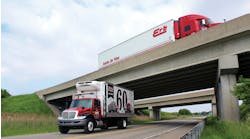The National Retail Federation (NRF), a trade group representing over 1.6 million American companies that employ nearly 25 million workers, said that the changes to trucking hours of service (HOS) rules proposed by the Federal Motor Carrier Safety Administration (FMCSA) will increase costs for businesses and consumers while simultaneously undermining highway safety.
“As a result of the current 11-hour daily driving limit, U.S. retailers have been able to achieve significant efficiencies within their supply chains and distribution networks,” David French, NRF’s senior vp- government relations, said in a statement.
“Any change to this daily driving limit will upset the careful balance and efficiencies that have been achieved and require changes to those new systems and processes,” he added. “In addition, such changes could result in significantly higher transportation costs and could lead to less safety as additional drivers and trucks will be required to make up for the shortfall.”
French noted that that FMCSA’s proposed HOS changes would increase transportation costs for retailers by anywhere from 3% to 20% depending on the supply chain network and style of retail operation.
NRF is also concerned that shortening the daily driving limit would require more drivers and more trucks to move the same volume of goods during the same time period as it would increase congestion on the nation’s already overcrowded highways, increasing the potential for accidents.
The group added that it is particularly concerned about the requirement for night time rest periods because retailers use overnight deliveries extensively in order to avoid daytime road congestion, particularly in urban areas.
“The deployment of more trucks during the night separates truck and automobile interactions, contributing to increased safety,” French said. “The proposed change … reduces the ability to schedule deliveries at night, placing more trucks on the road during normal commuting hours. This adversely affects a retailer’s supply chain performance, potentially increasing congestion-related delays and increasing the likelihood of accidents and a result of greater truck and automobile interactions.”


